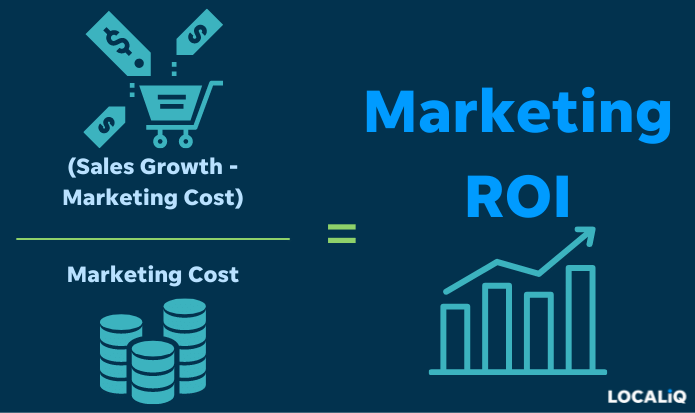Blogging is a powerful tool for small businesses. It allows you to establish your online presence, connect with your target audience, showcase your expertise, and drive traffic to your website.
While it may seem daunting, starting a blog for your small business website is easier than you think. In this step-by-step DIY blogging guide, we will walk you through the process of creating and maintaining a successful blog that will benefit your small business.
Step 1: Define Your Blogging Goals
Before you start your small business blog, it’s crucial to define your goals. What do you want to achieve with your blog? Common blogging goals for small businesses include:
- Increasing website traffic.
- Improving search engine rankings (SEO).
- Establishing authority in your industry.
- Generating leads or sales.
- Providing valuable content to your audience.
Clear goals will help you tailor your content and measure your blog’s success.
Step 2: Choose a Blogging Platform
Selecting the right platform is essential for a smooth blogging experience. WordPress is one of the most popular options due to its user-friendly interface and a vast array of themes and plugins. It’s perfect for beginners. Here’s how to get started with WordPress:
- Purchase a domain name and web hosting from a reputable provider.
- Install WordPress on your hosting account.
- Choose a WordPress theme that aligns with your brand.
- Install essential plugins for SEO, security, and performance.
Step 3: Plan Your Content Strategy
A well-thought-out content strategy is the backbone of a successful blog. Consider the following when planning your strategy:
- Target Audience: Understand your audience’s needs, preferences, and pain points. Tailor your content to address their interests and problems.
- Keyword Research: Use tools like Google Keyword Planner or SEMrush to identify relevant keywords in your niche. Incorporate these keywords into your content for better SEO.
- Content Calendar: Create a content calendar to organize your blog topics and publishing schedule. Consistency is key to attracting and retaining readers.
- Content Types: Experiment with different types of content, such as how-to guides, listicles, case studies, and videos. Diversifying your content keeps your blog engaging.
Step 4: Create High-Quality Content
Now that you have a plan in place, it’s time to create content. Follow these guidelines for creating high-quality blog posts:
- Research: Thoroughly research your chosen topic to ensure accuracy and relevance.
- Engaging Headlines: Craft compelling headlines that grab readers’ attention and encourage them to click.
- Quality Writing: Write in a clear, concise, and engaging manner. Proofread and edit your content for grammar and spelling errors.
- Visuals: Incorporate relevant images, infographics, and videos to enhance your content.
- Internal and External Links: Include internal links to other relevant posts on your blog, and cite credible external sources when necessary.
- Call to Action (CTA): End each post with a CTA that encourages readers to take action, such as subscribing to your newsletter or contacting you for more information.
Step 5: Optimise for SEO
Search engine optimisation (SEO) is vital for increasing your blog’s visibility in search engine results. Here’s how to optimise your blog for SEO:
- Keyword Placement: Incorporate your target keywords naturally throughout your content, including in the title, headings, and body text.
- Meta Tags: Write compelling meta titles and descriptions for each blog post to improve click-through rates in search results.
- Alt Text: Add descriptive alt text to your images to improve accessibility and SEO.
- Internal Linking: Link to other relevant pages on your website to improve navigation and SEO.
- Mobile-Friendly: Ensure your blog and website are mobile-friendly, as Google prioritizes mobile-friendly sites in search rankings.
Step 6: Promote Your Blog
Once you’ve published your blog post, it’s time to promote it to reach a broader audience:
- Social Media: Share your blog posts on your social media platforms, and encourage your followers to do the same.
- Email Marketing: Send out email newsletters featuring your latest blog posts to your subscribers.
- Networking: Connect with other bloggers, industry influencers, and potential collaborators to expand your reach.
- Guest Blogging: Consider guest posting on other reputable blogs in your industry to increase your visibility.
Step 7: Engage with Your Audience
Building a thriving blog involves more than just publishing content. Engage with your readers by responding to comments, asking for feedback, and fostering a sense of community. Encourage discussions and make readers feel valued and heard.
Step 8: Monitor and Analyze
To ensure your blog is on the right track, regularly monitor and analyze its performance:
- Traffic: Track the number of visitors, page views, and unique visitors to your blog.
- Engagement: Analyse user engagement metrics such as bounce rate, time on page, and social shares.
- Conversion: Measure the conversion rate from your blog, whether it’s signing up for a newsletter, making a purchase, or filling out a contact form.
- SEO: Keep an eye on your search engine rankings, and use tools like Google Analytics and Google Search Console to identify keywords driving traffic to your blog.
- Feedback: Listen to reader feedback and use it to improve your content and user experience.
Step 9: Monetise Your Blog (Optional)
While monetisation may not be the primary goal for all small business blogs, it’s worth exploring opportunities to generate income from your blog. Common monetisation strategies include:
- Affiliate Marketing: Promote products or services related to your niche and earn a commission for each sale generated through your affiliate links.
- Sponsored Content: Partner with brands or businesses for sponsored posts and collaborations.
- Sell Digital Products: Create and sell e-books, courses, or downloadable resources related to your niche.
- Advertising: Display ads from ad networks like Google AdSense or use direct advertising deals with relevant businesses.
Step 10: Stay Informed and Evolve
The world of blogging is ever-changing. Stay informed about the latest trends, algorithms, and best practices in blogging and SEO. Continuously evolve your strategy and content to meet the changing needs of your audience and the demands of your small business.









